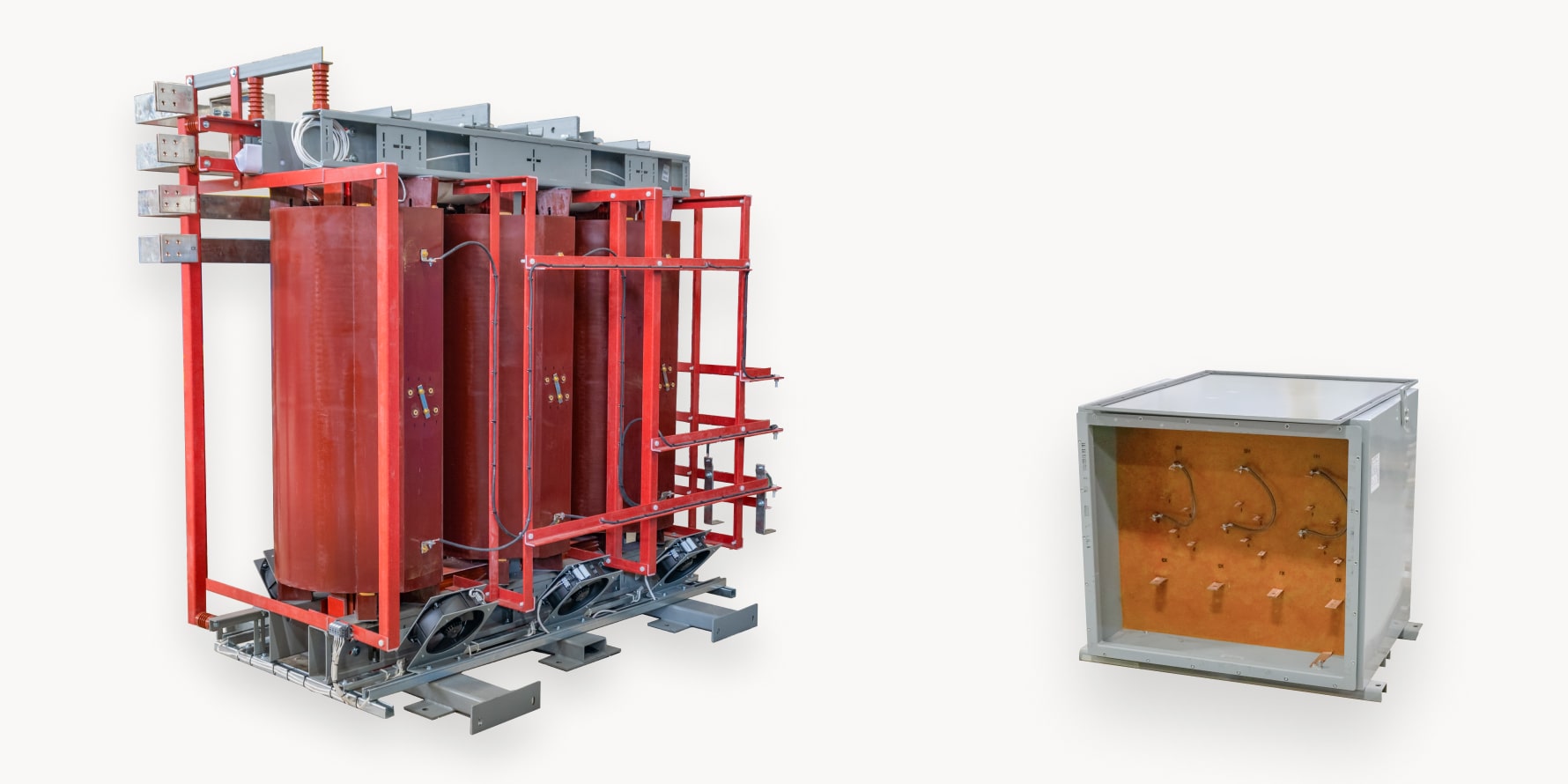Cast-Resin Transformers: Encapsulated & Cast Coil
Cast coil and encapsulated transformers provide resin-sealed protection and maintenance-free performance for critical applications.
July 30, 2025
Parts
Dry-type transformers are the go-to solution for indoor power distribution. They’re installed in industrial plants, off-shore oil rigs, data centers, and more. In all these environments, your standard dry-type comes with some basic protection. A steel enclosure shielding the core and coils. Usually coated with protective UV-resistant, anti-rust paint.
But in tough environments, the basics aren't enough.
What if your location has extreme airborne debris or moisture? Like underground mines or chemical plants. Your standard NEMA 1 rated dry-type might not cut it. You may need something more durable. Prolonged exposure to those elements can cause arcing, overheating, and ultimately transformer failure. That means unexpected downtime and painful losses in productivity.
Cast-resin transformers are built for these conditions. If your site has harsher conditions than usual, these units may be your best bet.
Let’s take a closer look.
What are Cast-Resin Transformers?
Cast-resin transformers are units with windings completely vacuum cast in epoxy resin. The epoxy provides both mechanical strength and protection from the environment.
Cast-resin transformers come in two categories:
- Encapsulated
- Cast Coil
We’ll take a closer look at both and how they differ from each other.
Encapsulated and Cast Coil Transformers
This chart gives a quick overview of how these two types compare.
Let's look at each type of unit.
Encapsulated Transformers
Encapsulated transformers are small, resin-filled units used for voltages under 1,000 volts. Due to their smaller size, the entire enclosure is filled with epoxy. They can also usually be mounted on walls due to their size and weight.
Encapsulated units are used in locations like mines, pulp and paper factories, and marine environments.

Maddox stocks both 3-phase and 1-phase encapsulated units that deliver in 3-5 days.
How Encapsulated Transformers Are Made
Encapsulated units are made by filling the enclosure with a type of resin. Either epoxy, polyurethane, or a polyester liquid. Silica sand is often added to improve the thermal conductivity and fire resistance.
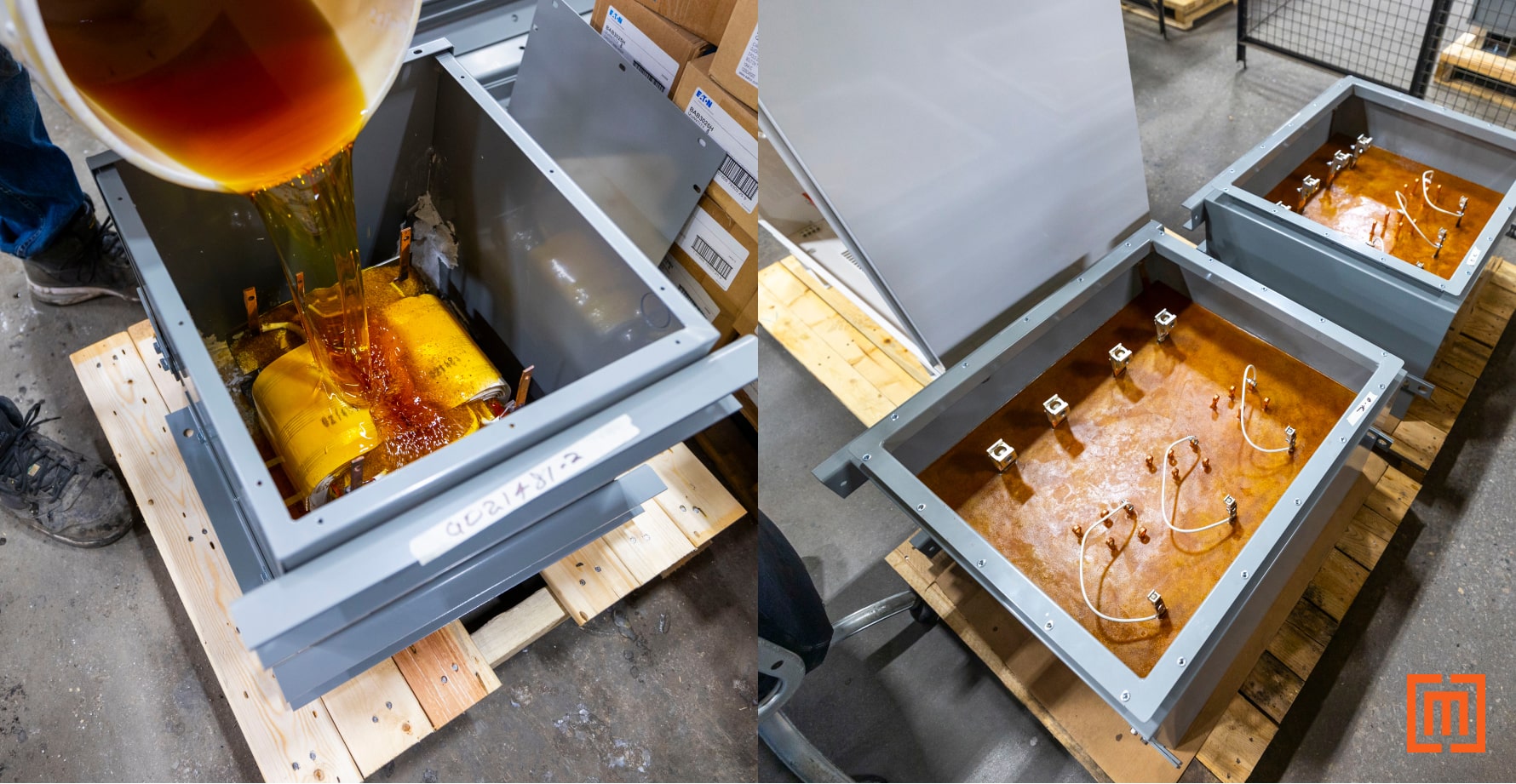
After the resin dries, the tap leads and the low and high voltage terminals are left exposed.

Encapsulated transformers are great for voltage applications below 1,000 volts. But above that voltage your unit requires more time and engineering to build. Let’s look at the qualities of cast coil transformers.
Cast Coil Transformers
A cast coil transformer is a dry-type transformer with a cast resin mold around the windings.
Unlike smaller encapsulated units, the resin surrounds only the windings, instead of filling the whole enclosure. The resin is poured or vacuum-cast into place, and then cured to form a solid structure. This process takes a significant amount of time, but it’s necessary to ensure the windings are completely protected.
These transformers are used for medium-voltage distributions of 1000V or more. You’ll often find them in industrial plants, medical centers, and data centers.
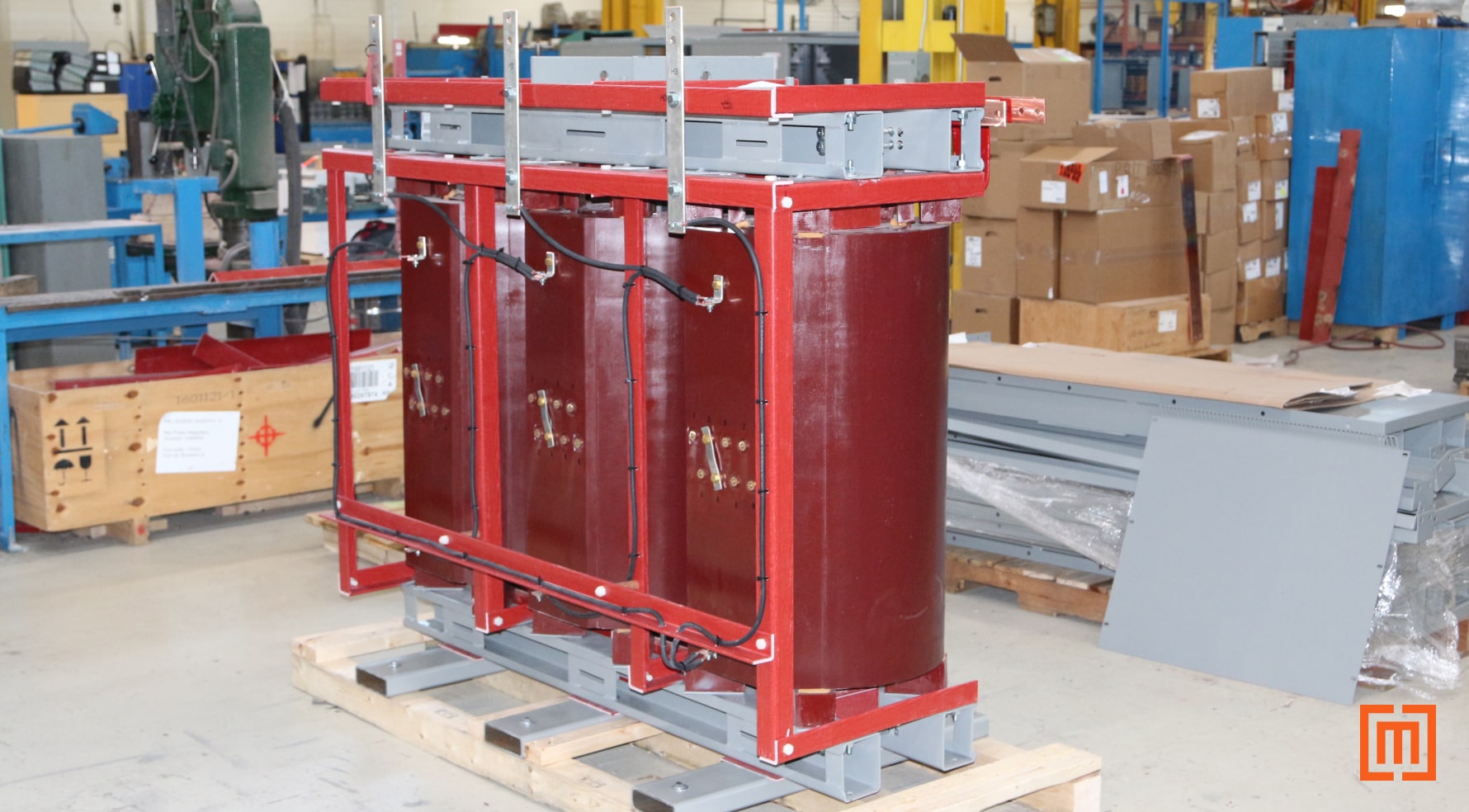
How Cast Coil Transformers Are Made
When a cast coil is being made, the windings are first wrapped in fiberglass. This provides high mechanical strength for short circuit forces.
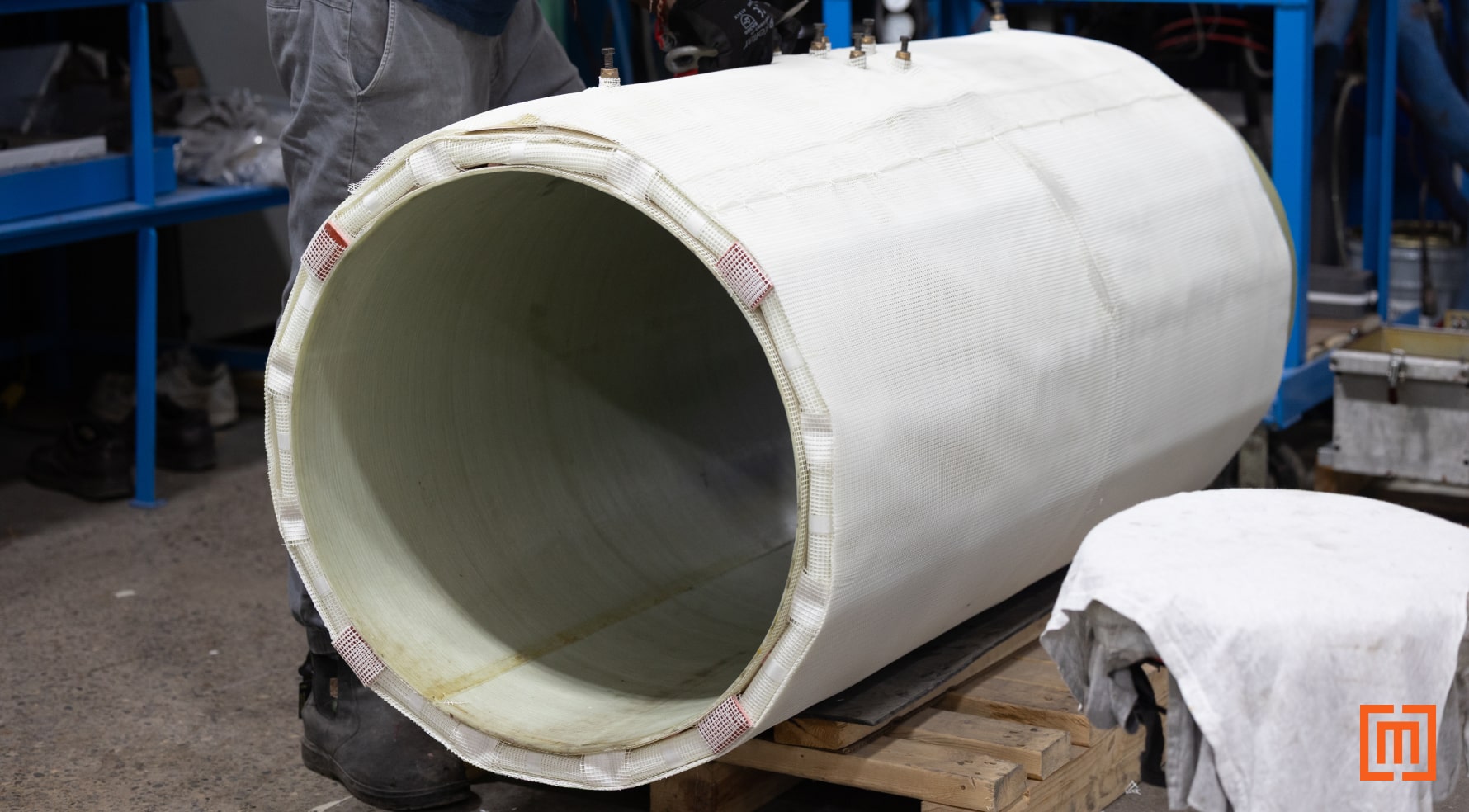
The windings are then placed in a mold where the epoxy resin or polyester compound is added. After drying, the coils are removed from the resin mold. Below, you can see the two removed cast coils on the left, and the resin mold on the right.
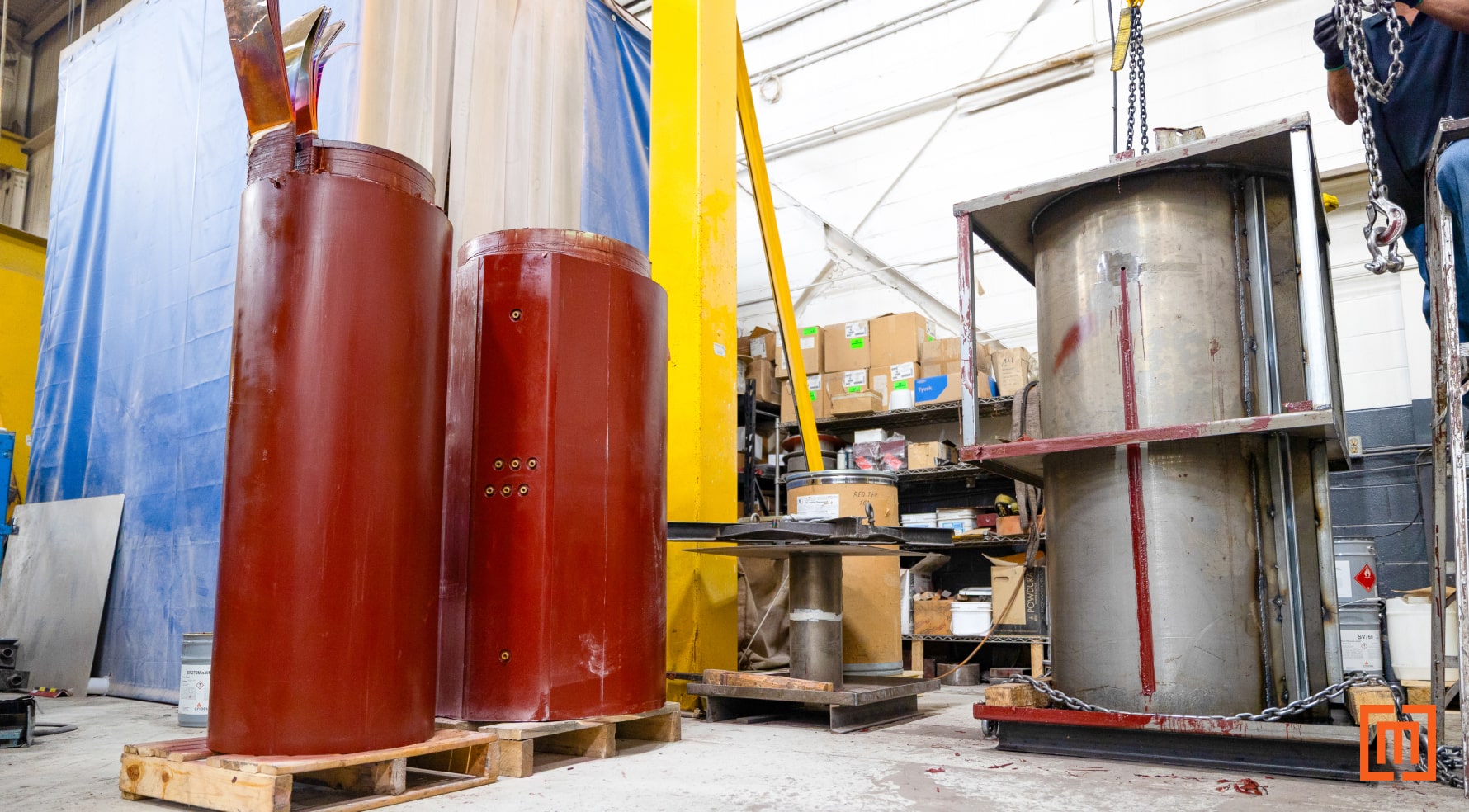
Benefits of Cast-Resin Transformers
Both encapsulated and cast-coil transformers have several advantages over standard dry-types.
No Partial Discharge
Partial discharge is a localized dielectric breakdown that can occur in air gaps inside a transformer’s insulation. In cast-resin transformers, the epoxy fully covers the windings, eliminating any air pockets. This means they are less susceptible to partial discharge.
Low Noise
Noise in transformers is typically generated by core magnetostriction and coil vibration. In cast-resin transformers, the rigid epoxy encapsulation mechanically locks the windings in place. This minimizes audible noise, and reduces vibration and resonance within the transformer. These units work well in noise-sensitive environments including commercial buildings, hospitals, and schools.
Moisture-Proof
Traditional dry-type transformers usually leave windings exposed to ambient conditions. In contrast, cast-resin transformers offer full environmental sealing. The solid block of resin prevents any moisture from getting in. Even in humid or chemically aggressive environments. This makes them ideal for installations with poor climate control.
High Impulse Strength
Cast-resin insulation provides excellent dielectric strength and high impulse resistance. Their structure enables the transformer to absorb and withstand transient overvoltages (lightning strikes or switching surges) better than air-insulated windings. This means cast-resin transformers often carry higher BIL (Basic Impulse Level) ratings than standard dry-types. Making them better suited for critical or unstable grid conditions.
Maintenance-Free
Standard dry-type units leave their windings exposed to dust and moisture. In contrast, cast-resin transformers completely seal off the windings. This protective barrier minimizes the need for routine transformer maintenance around the coils.
Keep in mind, unless the unit is encapsulated, the epoxy resin will only surround the coils. This means that dust and debris can still find its way into a standard ventilated enclosure.
Other Options for Environmental Protection
Cast-resin units are not the only transformers with protective measures against the environment.
All dry-type transformers have a NEMA rating indicating the enclosure’s level of protection. Most indoor application transformers come with the standard NEMA 1 rating. Outdoor applications typically require at least a NEMA 3R enclosure which adds a protective shield against rain and snow. If your environment has extreme dust or flying debris, you probably want to go with a NEMA 4-rated enclosure.
NEMA-ratings and cast-resin epoxy protect different parts of the transformer. NEMA-ratings are protection levels for the entire transformer enclosure. Cast-resin epoxy specifically protects the windings.
Whether you need winding protection, an enhanced enclosure, or both will depend on your specific application.
If your transformer needs protection from both short circuits and flying debris, a cast-resin transformer with a NEMA 4X enclosure would work. However, if your environment is humid, but not overly corrosive, a cast coil transformer with a NEMA 3R enclosure would work.
It all depends on what your environment is, and what protections you need.
Should You Use A Liquid-Filled or a Cast Coil Transformer?
If you’re deciding between a liquid-filled or a cast coil transformer, your need to determine:
- What part of the transformer needs to be most protected?
- Where do you plan to install the transformer?
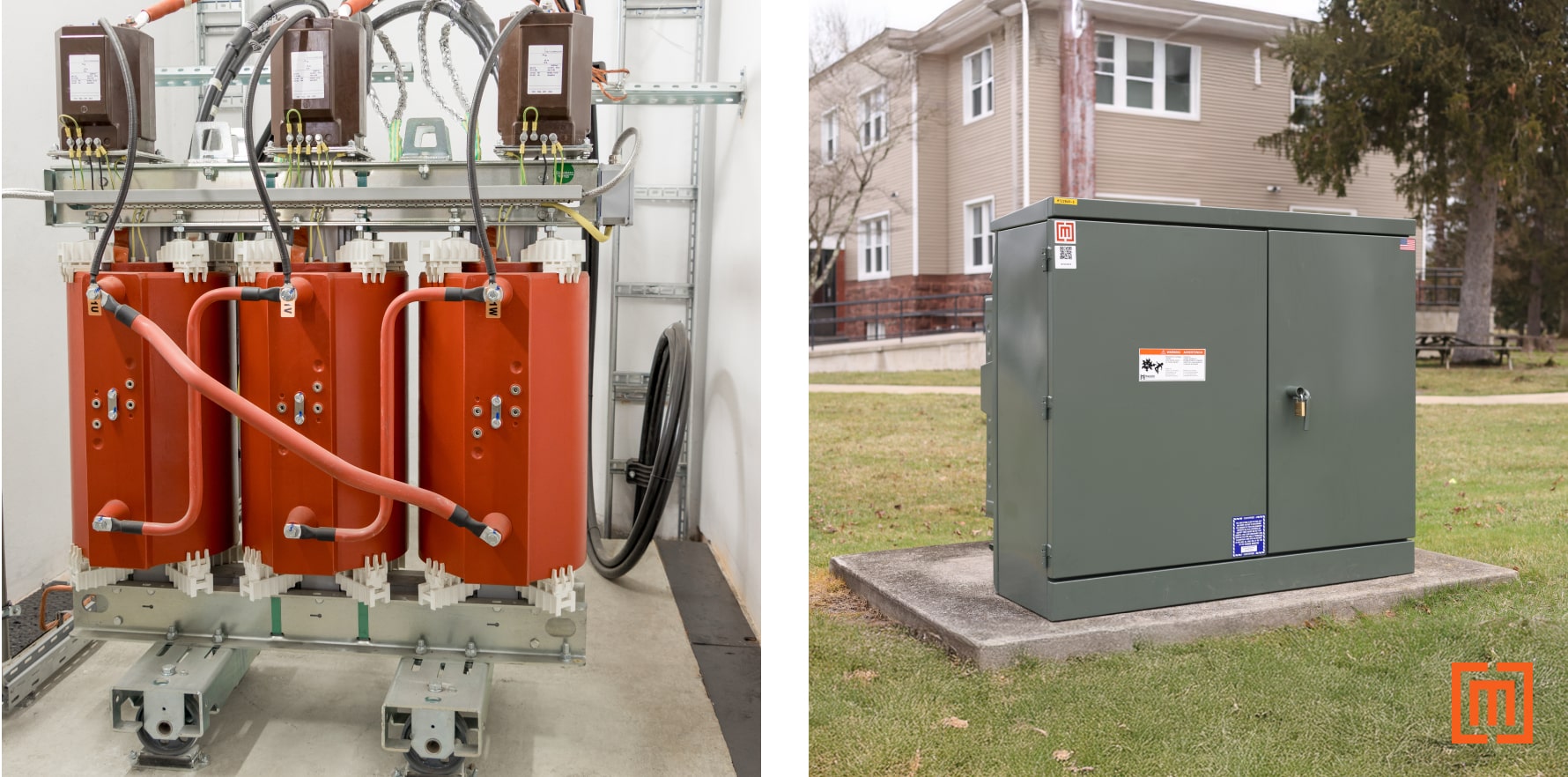
Protective Components
Cast-coil units and liquid-filled units protect transformer windings in different ways. Cast coil transformers protect the transformer windings using an epoxy mixture. Liquid-filled transformers use a sealed tank filled with oil to protect the windings.
Unit Locations
Cast coil units are a good choice for indoor spaces like hospitals and schools. These areas need safe, low-risk equipment due to fire safety and environmental concerns.
Liquid-filled transformers are best for outdoor applications like utility and industrial sites. But you could use a cast coil unit instead if you want to eliminate the need for spill containment.
What you plan to use the transformer for will decide which protective measures you need.
Conclusion
If you’re installing a unit in a rough indoor environment, consider an encapsulated or cast coil transformer. These units hold up under harsh conditions, while also minimizing your routine maintenance and repairs. While cast coils may be more costly upfront, their resilience usually makes them a worthwhile investment in the long run.
If you need one of these transformers, fill out the form below.
We can help you find the right transformer you need to power your project.

